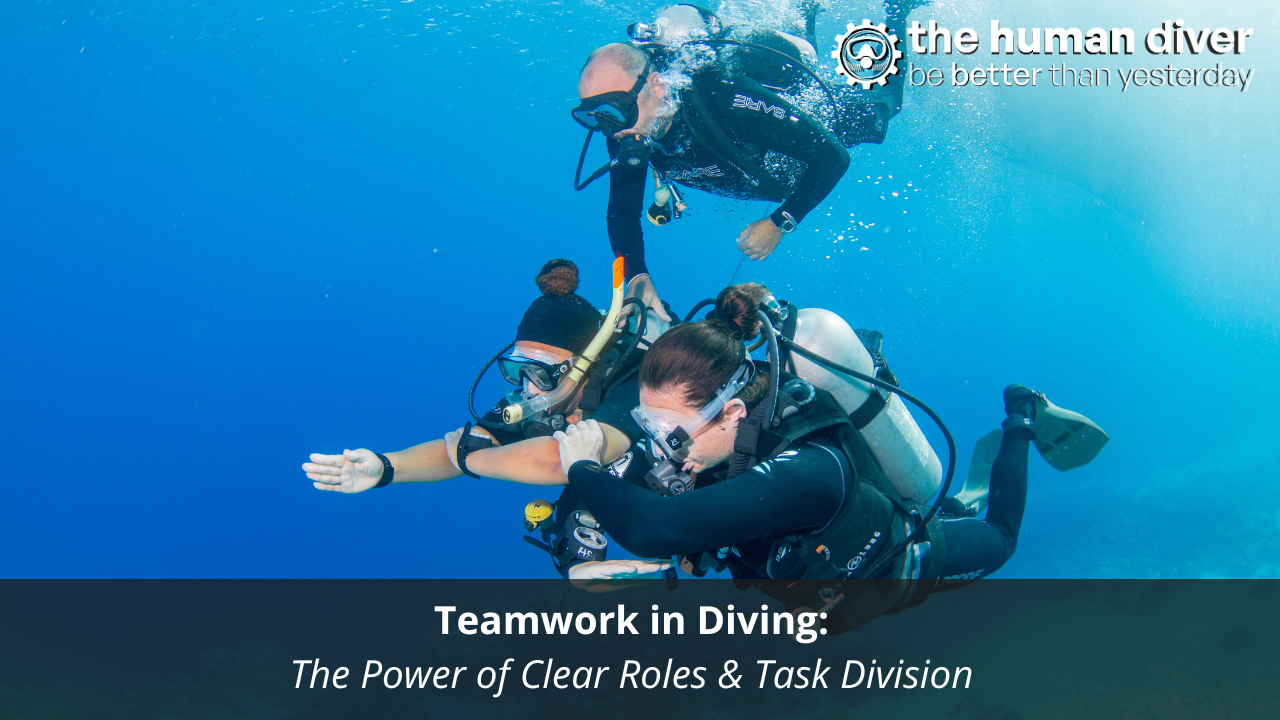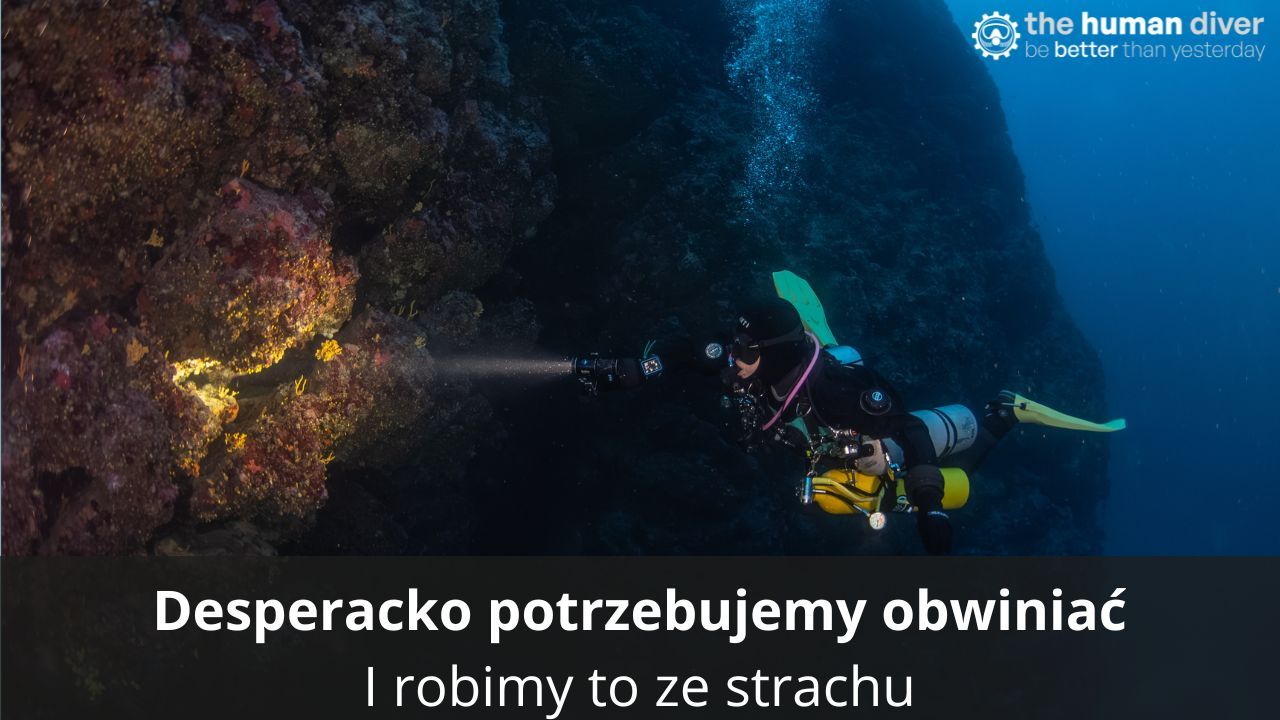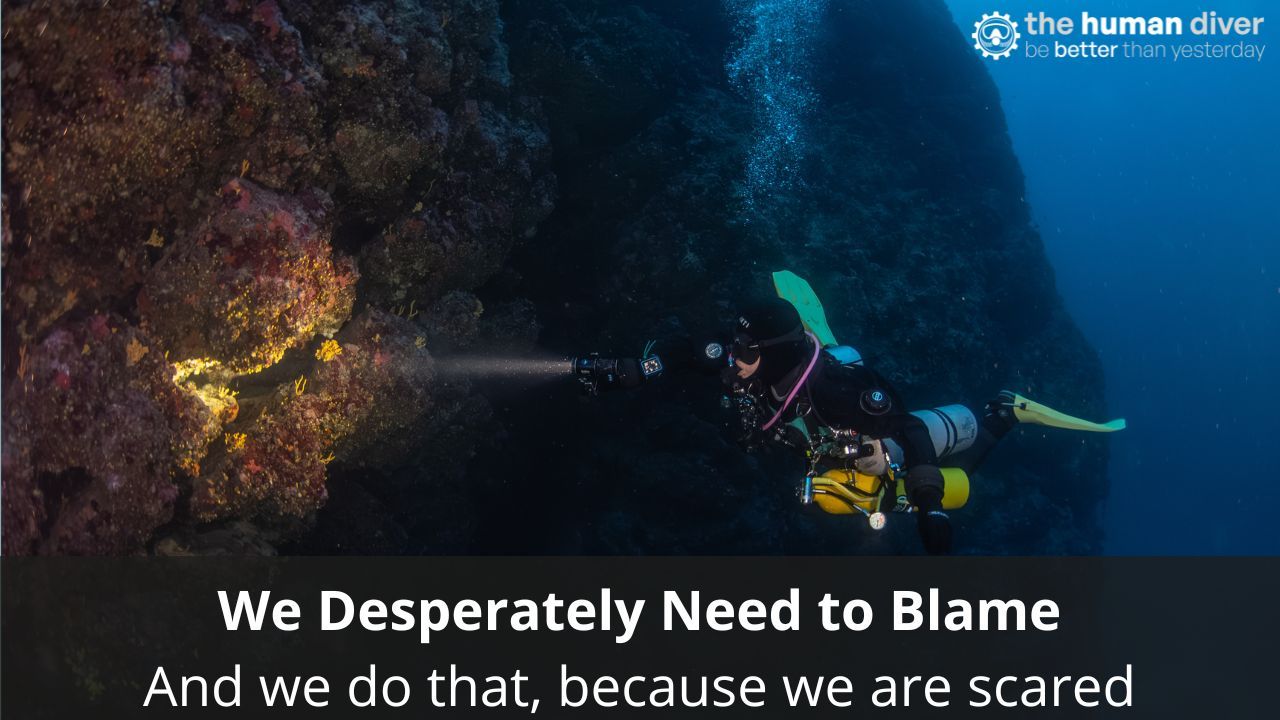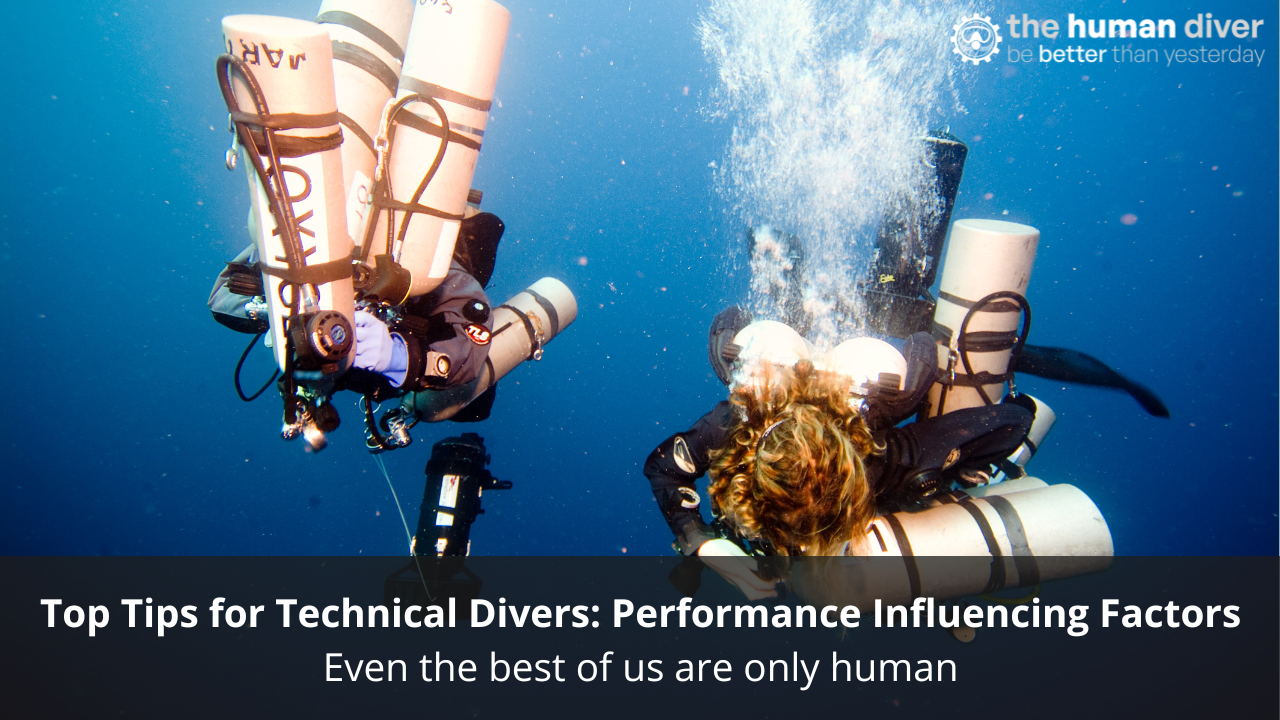
Reframing The Dirty Dozen - Part 2
Jun 04, 2025In Part 1 of this blog, we explored three of the "Dirty Dozen" human factors that contribute to errors and incidents in diving: lack of communication, distractions, and lack of resources. These factors, originally developed by Gordon Dupont, offer a valuable framework for identifying and mitigating risks in diving. Human factors are universal, and their application to diving, both recreational, technical and professional, is crucial for safety and performance.
We’re reframing this list to look more at the context involved, the systems and procedures that affect human behaviour and performance in ways that need to be considered.
In this part we will look at three more factors: stress, complacency and lack of teamwork.
Stress

Stress can be a good thing, eustress, or it can be a bad thing, distress. Distress comes in two forms which impact our performance, acute or chronic. Acute distress comes about from the real-time demands placed on our bodies and minds from dealing with unexpected events, working under time pressures or with inadequate resources. Chronic distress comes from long-term demands like job security, family issues/relationships or illness and can impact performance by taking up a chunk of our processing power. This reduction means awareness is reduced, and the subsequent decision-making is more likely to be flawed. Interestingly, if there isn’t enough stress to keep our interest levels up, then we start to become bored with the situation (see the next topic below).
Countermeasure. Early signs of stress include changes in personality and moods, errors of judgment, lack of concentration and poor memory. Individuals may notice difficulty in sleeping and an increase in fatigue; their eating habits might change with comfort eating more likely or not eating at all. Longer-term signs of stress include susceptibility to infections, increased use of stimulants (coffee, Red Bull etc,) and self-medication, absence from work, illness and depression. Distress is a very personal thing, and consequently, external cues/clues aren’t always obvious.
Using the HALT model to find out if people have stressors present can help by allowing you as a team member, instructor or peer, to do whatever is possible to control or mitigate their stressors. If the situation is high stress for all involved, or if it is constantly high stress, then the reasons why can be analysed to see if it is possible to put wider mitigation in place. For example, instructors are always struggling to get students to complete the open water course due to time pressures. It’s easy to say “allow more time”, but in the real world where profits and staff pay are large factors, some dive centres react by ignoring standards violations such as missing skills or dives in order to save time, and therefore money. Because the system (in this case the agencies who set the standards) doesn’t mandate minimum times or ensure performance standards are defined/maintained, this problem gets passed down to instructors who are told to deal with the stress. They then have the choice to leave their job or cut whatever corners are needed to reduce their own stress.
Complacency

Complacency can be described as a feeling of self-satisfaction accompanied by a loss of awareness of potential dangers or threats. It often comes about when conducting routine activities that have become habitual and the perception of risk of getting something wrong is low. This reduces the attention or vigilance paid to the situation and important signs/signals/cues will be missed and due to cognitive biases, the diver only sees what they expect to see. Research has also shown that immediately following a high-stress situation, complacency can be encountered due to the relief felt in resolving the situation.
The problem is that complacency is an easy bucket to throw sub-optimal performance in. As humans, we are cognitively efficient, trying to reduce the effort needed to solve a problem. This is a benefit. However, when things go wrong, we often judge divers or instructors for being complacent when they are being cognitively efficient. We reward people for efficiency (goes well), but punish them for complacency (goes badly). Think about the context.
As highlighted above, too much stress can be a bad thing when it comes to performance. However, if there isn’t enough stimulation to keep the attention focused on the topic at hand, then complacency can set in. As such, if a low-stress environment is present, combined with fatigue (like a liveaboard!), then additional vigilance must be applied. Easy to say, harder to do.
Countermeasure. It’s far more efficient to work from memory, however for critical or complicated tasks using a checklist forces us to slow down our thinking and makes it harder to make a mistake. Once again, time pressures make us try to be as efficient as possible, but our brains are fallible. The old saying of “two brains are better than one” is highly applicable here. Team members can help double-check things and also keep the team accountable. However, without clear standards and acceptable behaviours/skills, it makes it hard to challenge others, so psychological safety is key. “We’ve always done it that way” is one of the scariest sentences, as it shows a system-wide approach to risk or harm - nothing has gone wrong, therefore we must be safe. Understanding the rationale behind task design and required actions is important for us to know when it is necessary to slow our thinking down.
Lack of Teamwork

Lack of teamwork occurs when divers fail to coordinate effectively, resulting in fragmented efforts or misaligned goals. Teamwork is about more than working together; it’s about working cohesively. Consider a group dive where roles are unclear, and divers scatter in different directions. Or a buddy pair where one diver monopolizes decision-making, leaving the other feeling excluded and disconnected. Poor teamwork can lead to confusion, missed signals, and increased risk during emergencies. A well-coordinated team enhances situational awareness and response capability.
Countermeasures:
Many buddy pairs or dive groups don’t consider themselves to be a team, even though they fit the definition of “a group of people working together to achieve a common goal”. When we define what our goal is, we’re on the way to becoming a team. In recreational diving that goal is often “to have fun”, but even within that everyone’s idea of fun differs. Giving everyone the chance to state their goal for the dive and how they see that being achieved (their expectations) is a great way to start building a team.
Another measure of a good team is the level of psychological safety that everyone encounters. It takes time to build a psychological safety in a team but when it exists it increases trust and makes it easier for divers to speak up when needed (see this series of blogs). Allowing everyone to be heard, as well as emphasising the importance of mutual respect and shared responsibility will help everyone see they are an important part of the dive.
A group of divers who’ve never met before, are given a basic briefing about the route they’re taking, the signs used and emergency procedures are not a team. Using a framework like UNITED-C helps give a briefing that allows a shared mental model of the upcoming dive, as well as setting out team goals, roles and what is needed for the plan to work.
Read part three here and part four here.

Jenny is a full-time technical diving instructor and safety diver. Prior to diving, she worked in outdoor education for 10 years teaching rock climbing, white water kayaking and canoeing, sailing, skiing, caving and cycling, among other sports. Her interest in team development started with outdoor education, using it as a tool to help people learn more about communication, planning and teamwork.
Since 2009 she has lived in Dahab, Egypt teaching SCUBA diving. She is now a technical instructor trainer for TDI, advanced trimix instructor, advanced mixed gas CCR diver and helitrox CCR instructor.
Jenny has supported a number of deep dives as part of H2O divers dive team and works as a dive supervisor and safety diver in the media industry.
If you'd like to deepen your diving experience, consider the first step in developing your knowledge and awareness by taking the Essentials of HF for Divers here website. If you're curious and want to get the weekly newsletter, you can sign up here and select 'Newsletter' from the options.
Want to learn more about this article or have questions? Contact us.










